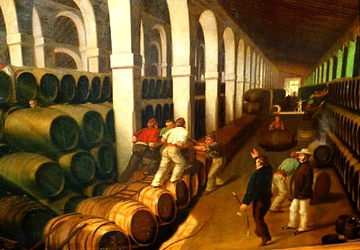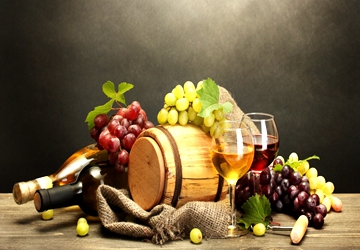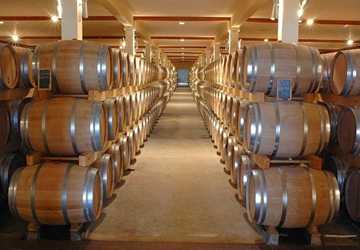Wine is a wonderful beverage. It’s definitely more than fermented grape juice — wine offers endless flavors and aromas, so it can take you to foreign lands with just a whiff and a sip.
When it comes to wine, oak barrels are always part of the conversation. After all, fine wine spends time in oak barrels, making all the difference. Why? Let’s talk about oak-aged wine. Why do winemakers age wine in barrels, anyway? Here’s what you need to know about oak-aged wine and why it is special.

Why Oak?
Oak barrels have been part of winemaking since ancient times. The Ancient Romans discovered the crafty invention somewhere in what we now know as France, where Celt and Gaelic tribes built these containers to store everything, from grains to beverages. Before the adoption of barrels, winemakers and traders made, aged, and transported wine in fragile clay vessels — wood barrels are infinitely better.
Of course, people experimented with all types of wood to make barrels, but they all found in oak the perfect material. Oak is impermeable, flexible, light-weight and widely available in Europe (now worldwide). Oak was an easy decision.
What Happens to Wine in a Barrel?
Someone, somewhere, eventually discovered that wine looked, smelled and tasted different after spending some time in oak barrels. What might have been a lucky discovery soon became the norm. Fine wine has spent time in oak barrels since then.
Oak is an interesting material. It can infuse its contents with what we know as oak spices: vanilla, cinnamon, clove and other brown baking spices. The wood just tastes remarkably similar to such comforting spices.
Aging wine in oak barrels also allows for slow oxidation. The wine’s color and mouthfeel also change, making the wines more shelf-stable and complex on the nose and palate.

What to Expect from Oak-Aged Wine?
Almost all red wines spend time in oak barrels, and only the youngest everyday red wines are not tainted by the wood. For white wine, only a few examples experience such holy transformation. Only the sturdiest white wines can withstand months and sometimes years in a wood container without damage. The best example? Chardonnay.
Red wines aged in oak offer fruit aromas and an array of spices. The wines can also show a crimson color proper of oxidation, and its tannins, the gritty particles that cause a drying sensation in your mouth, mellow after a few months in oak.
Oak-aged white wines offer white, citrus or tropical fruit scents and creamy vanilla. Oak-aged Chardonnay can smell enticingly sweet and complex, even if it is completely dry!
Splurge a Little; It’s Worth It.
Oak barrels, though, are expensive, meaning wine aged in oak comes at a higher price. Is oak-aged wine worth it? For red wines, yes, every time. Oak gives extraordinary complexity to the wine, and oak spices are expected in every great red wine.
For white wine, oak is a stylistic decision, and you might enjoy it or not. Oak-aged Chardonnay is rich and bold, but un-oaked white wine is refreshing and more approachable. Is oak-aged wine better than un-oaked wine? It isn’t — they’re simply different.







